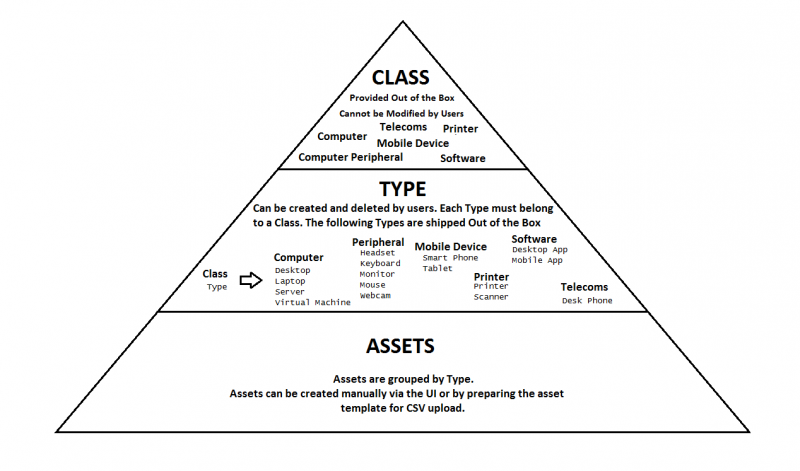Difference between revisions of "Asset Management"
| Line 1: | Line 1: | ||
__NOTOC__[[Main Page|Home]] > [[Service Manager]] > IT Asset Management | __NOTOC__[[Main Page|Home]] > [[Service Manager]] > IT Asset Management | ||
| − | + | == Introduction == | |
| − | |||
IT Asset Management involves the monitoring of assets through the different stages of their life cycle. This includes tracking the performance, costs, and relationships of assets to support the strategic decision making for the IT environment. | IT Asset Management involves the monitoring of assets through the different stages of their life cycle. This includes tracking the performance, costs, and relationships of assets to support the strategic decision making for the IT environment. | ||
Revision as of 16:50, 7 January 2016
Home > Service Manager > IT Asset Management
Introduction
IT Asset Management involves the monitoring of assets through the different stages of their life cycle. This includes tracking the performance, costs, and relationships of assets to support the strategic decision making for the IT environment.
IT Asset Management facilitates the recording of detailed hardware and software inventory information which can be used to assist IT with supporting the users of the assets and for making decisions about hardware and software purchases and redistribution.
The Assets in the IT Asset Management forms the foundation of a Configuration Management Database (CMDB). Assets can be used as part of Incident, Problem, and Change processes to assist in incident classification, impact analysts and change planning.
To access the Asset Management capability of Hornbill Service Manager, your User Account must have one of the following roles associated.
- Asset Management User - This role is for an Asset Management User. It includes rights to define new and edit individual Assets as well as being able to add detailed Asset information.
- Asset Management Admin - This role is for an Asset Management Administrator and as well as providing all the capability of the Asset Management User role, it includes additional rights to define new and edit existing Asset Types.
Getting Started with Asset Management
- Understanding the Asset Structure
- The Hornbill Service Manager asset structure can be considered as in the following diagram:
- At the top of the hierarchy are the pre-defined asset classes:
- Computer, Computer Peripheral, Mobile Device, Network Device, Printer, Software, Telecoms.
- The Asset Classes are predefined and cannot be modified.*
- The Asset Class is an important consideration when creating a new Asset Type, as the Class chosen will dictate which attributes are available to populate when adding your individual Assets beneath an Asset Type.
- *If Customers Identify additional Asset Classes, or Class specific Attributes which they require and are not currently catered for, please inform Hornbill and we will review and if accepted look to include in future updates.
- Asset Types
- Adding, Updating and Deleting Assets
- Working with Assets
- Reporting on Assets
